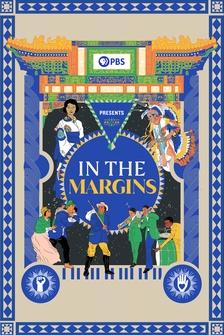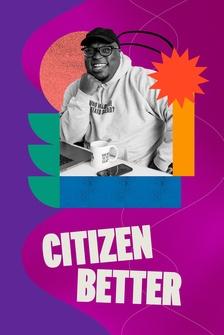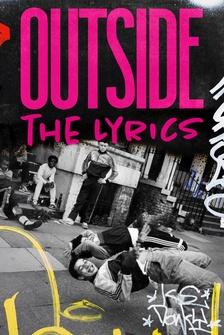Every 10 years in the US folks celebrate a time honored tradition that most of us wish we could forgot and many of us do: the collection of the national census.
Because let’s face it: it only happens once every 10 years and filling out a questionnaire is hardly the highlight of the average person’s decade when compared to other major life events like graduations, deaths, newborn kids, buying a home, or avoiding social media spoilers for our favorite shows.
But if the census is supposed to be a relatively impartial record that keeps track of how many people are located in the country at a given time then why does the census ask us about our race Well the answers tells us about a history of voter disenfranchisement that stretches back to our country’s inception.
So stay tuned because this week Origin of Everything is getting very...civics-y.
Civic-ish?
Civics minded?
Let’s settle for the last one.
One thing I've heard repeated over and over again about the census is "why does the government need to know our race?"
The argument usually goes, “We’re all more than our race.
So, why is the federal government keeping track of this sensitive information?
And of course we all have many intersecting identities, among which race is one.
But while race became a major category that public and private institutions started tracking systematically throughout the 20th century, the federal census was preoccupied with race since the 18th century.
The first census conducted in 1790 included questions about, “gender, race, relationship to the head of household, name of the head of household, and the number of slaves, if any” according to the US Census Bureau, so the question of race has been baked into the cake since the census’s beginning.
But although the original census document was pretty short and sweet, it was actually a reflection of the limited scope of citizenship at the country’s beginning.
As more and more people were granted access to citizenship, residency, asylum, and government aid, the questions became more complex through time.
Now the census is as much about keeping track of folks as it is about preventing things like voter suppression and gerrymandering, and also allocating state and federal spending for infrastructure, housing, education, and healthcare.
It also allows us to measure life outcomes for different groups, track the efficacy of government programs, and determine how many representatives and electoral votes each state gets.
That’s right.
Filling in a bunch of bubbles can determine how many federal resources your state (and, indirectly, you) get every year, as well as how much your state matters in the next federal election.
Which means in some ways info we bubble in on the census can have as lasting an impact as the votes we cast.
So to get to the bottom of this question today we should first talk about how the census emerged and what exactly those early enumerators (no really that’s what census-takers are called) were even looking for.
Next we need to think about how it evolved from a 6 question survey to become a 50 plus question laundry list of information for the federal government before being whittled down to 10 questions again.
And the answer demonstrates how we went from recording 6 answers per household across 13 states, 3 districts and 1 territory to spreading to over 300 million people today.
And finally we’ll discuss why race (among other new questions) seems to be here to stay on this nationwide poll.
The early history of the census runs pretty much parallel to the history of the first US Presidency.
George Washington had been in office for 1 year when the first census was conducted in 1790.
And nearly every one of the original 6 questions was about race in one way or another, because the number of eligible voters was entirely determined by race and gender.
Census workers were asked to collect these answers from every household: Names of heads of families The number of free White males aged: under 16 years and of 16 years and upward Number of free White females Number of other free persons Number of slaves The 3 of the questions explicitly ask for the number of white residents in a household while the last two ask to record “other free persons” (other being the coded word here for “not white”) and number of slaves (with an understanding that the overwhelming majority of enslaved persons at this time were of African descent).
So the original census design was largely concerned with race.
But why?
Well keep in mind that only free, white men who owned property and were 21 or older could vote.
So the earliest purpose of recording race on the census wasn’t to evenly distribute voter rights, but to limit enfranchisement to all but one specific group.
And in order to guarantee that limitation, the federal government had to ask about race (since it was a prerequisite of voting).
But because voting rights were guaranteed to a relatively slim number of people, the early census didn’t require much more information outside of race, gender, age, legal status (in regards to slavery and freedom) and whether or not you were a property owner.
The founding fathers shared a belief that men who didn’t own land, poor people, white women, and all racial minorities were incapable of casting a decent vote or deciding the future of the country.
So the original reasons for recording race on the census were aimed at disenfranchisement, and limiting the rights of full citizenship to a small percentage of the overall population.
If that’s the case, then why did race as a category on the census stick around?
Well the answer comes down, again, to how we were voting or really who was being excluded from the voter rolls.
After 1790 and throughout the 19th and 20th centuries, key pieces of legislation and historical shifts increased both the size of the country and the number of citizens eligible to vote.
That included people of color, emancipated slaves, all women, and men who didn't own land.
But the road to a fairer census was still very fraught.
According to journalist Becky Little, by 1820 “all other free persons” was converted to “free colored males and females.” And in 1850, the census expanded to include the category of “mulatto” under the ranks of races that people could check off.
But that was because legislators saw the country pivoting toward the civil war, so they were thinking about which states would remain in the union, and about how to count millions of African Americans and people of color who were either enslaved or considered legally free but still largely barred from casting a ballot.
And Professor Melissa Nobles, a political scientist at MIT, noted that the 1850 designation of “mulatto” was added at the request of racial scientist Josiah Nott, who hoped to use this information to prove his false theories about biological differences between people based on the degree of African blood they have.
In 1890, for just one census cycle, categories like “mulatto” “quadroon” and “octoroon” were available on the census.
But by 1930 statisticians acknowledged these categories were subjective and largely insignificant and replaced these subcategories with “Negro” while also adding categories for people from South and East Asia, Native Americans, and Mexicans or Mexican Americans.
But the spread of Jim Crow from 1850 into the 1960s, meant that the census’ data collection on race was often tied to ensuring that certain people could not vote rather than providing an accurate and objective number on the population.
So race has been a contentious, and often very negative, category on the census for most of its history.
So why did it stick around to today?
Well, arguments by both the Census bureau and supporters of keeping race on the census point out that the issues with recording the race on the census (namely to gerrymandering or realigning congressional districts) can easily be flipped on its head.
Just as race has been used to redistrict certain areas that are largely populated by racial minorities and people with fewer financial resources, those same numbers can be used to raise cases in court against unfair redistricting lines that favor one party over another.
For example, people still live (either through social organizing or through economic stratification) in neighborhoods that can be racially or economically homogeneous, and race and class often align with people’s political affiliations.
So, census data can prevent congressional districts from being drawn in ways that guarantee one party or type of candidate will always win a certain district, even if the majority of voters living in that district support an opposing party or candidate.
And because as of today the census is mandatory (unlike voting) it gives a fuller scope of the number of people actually residing in a state than the turnout of voters on election day.
So the census is the federal government’s best chance to record the accurate number of people in each state, to make sure that everyone’s vote can count equally, and to determine how federal funds are spent based on population.
And recording race on the census helps support redistricting in states like North Carolina as recently as this year (where congressional lines were found by federal courts to disproportionately disadvantage minority voters).
It’s also been included as key evidence in a number of redistricting cases throughout 20th and 21st century.
So this seems to be the matter of same data with different objectives.
It doesn’t downplay that the history of recording race on the census was alarmingly negative, but rather says that the recording of race isn’t the inherent issue at hand but rather how lawmakers choose to use that information for the public good (or not).
And every time a new question is added to the census or removed, it sparks ongoing debate about what should be recorded and how that information is being used, whether it be for the public good or for more partisan efforts.
This debate is rearing its head yet again as we head towards the 2020 census.
Well there you have it.
The only two things that have stayed pretty much consistent in collecting data for the census is recording race...and calling census workers “enumerators.” And while that name comes across as pretty dry, the debate about how and why the government is recording race is anything but.
And while the history of race on the census is largely rooted in disenfranchisement, that same info has often been taken in the last several decades to fight disenfranchisement.
Because the questions that researchers ask are often just as critical if not more so than the information they collect.
Our personal perspectives and arguments influence, shape, and change the outcomes of studies just as much as the results themselves.
And that means there aren’t really any strictly objective questions because those questions are driven by very real, sometimes good and sometimes not so good, human motivations.
So what do you think?
Anything to add on how recording race on the census impacts your vote?
Any other information to share?
Be sure to drop all of those comments, questions, and debates down below, subscribe to Origin















